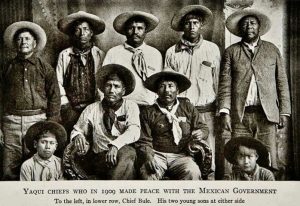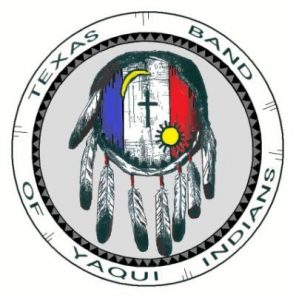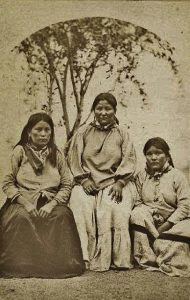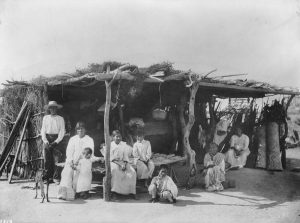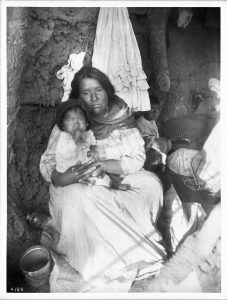Yaqui Indian Tribe: Facts, History and Culture
Published on May 22nd 2019 by staff under Tribe Facts
The Yaqui Indian tribe is indigenous to Mexico, inhabiting the Rio Yaqui region of Sonora in the Mexican city as well as parts of the southwestern United States. Communities of the Yaqui are spread all over the U.S. including Durango, Chihuahua, Sinaloa, Nevada, California, and Texas. They referred to themselves as Yoeme or Hiaki which in their language translates to people.
Language
The dialect of this tribe is a part of the Uto-Aztecan family of languages. They converse in the Cahitan which is a group of ten intelligible languages, initially spoken in Sinaloa and Sonora regions. Though this language is on the verge of extinction at present, the Yaqui tribe still speaks in it, with 15,000 speakers dwelling in Mexico and about 1000 in the United States particularly in Arizona. The language of the Yaqui is tonal with the accent laid upon the first or second syllable of a certain word.
Yaqui Language Words:
Water: Vaa’am
Moon: Meecha
Sun: Taa’a
Man: Takaa
Woman: Hamut or Huubi
One: Seenu
Five: Mamni
History and Origin of the Tribe
The Yaqui tribe dwelt in reservations in Mexico’s Sonora for a long time, while others formed neighborhood and colonies in different parts of the city.
In 1533 when they came in contact with the Spanish people about 30,000 members of this tribe dwelt in 80 villages encompassing an area with a length and width of 60 and 15 miles respectively.
They entered into a fierce battle with the Spaniards when the latter tried to intrude into their territory and since then, began their struggle to protect their lands and property that went on for about 40 years. Francisco de Ibarra tried establishing a Spanish settlement in their territory but failed in his endeavor.
In 1608 the Yaqui in collaboration with 2000 Indian allies particularly the Mayo people achieved victory against the Spaniards in two consecutive battles. However, in 1610 there was an agreement of peace between the Yaqui Indians and the Spanish people, while in 1617 they came in contact with the Jesuit missionaries and lived with them amicably for about 120 years. Many Yaqui people converted into Christianity though they did not lose control over their land and remained united as a community.
When Mexico was struggling to attain independence from Spain, the Yaqui retained their individuality and considered themselves as self-governing. After winning independence, the Yaqui refrained from paying taxes and revolted in the year 1825. Juan Banderas, their leader, wished in uniting all the Indian tribes and freeing them of Mexican control.
They had succeeded at the beginning in ousting the Mexican people, but in 1833 Banderas faced defeat and execution, making their struggle even more difficult. A series of horrifying wars left the Yaquis impoverished and most of them were sold as slaves by 1908. Some of them labored hard until death while a few managed to escape, though their condition was worse as they were far from their dwellings and died of starvation.
During the conflict, many of the tribal people took to the identities of the other tribes while some amalgamated into the Mexican population dwelling in Sonora, and a few even migrated to the United States, settling in New Mexico, California, southern Texas and Arizona.
The last major warfare occurred in 1927 after which the Yaquis were defeated since the modern weapons and ammunition used by the Mexican government were too difficult to handle. In the first half of the 19th century, Anselmo Valencia Tori, the spiritual leader of the Yaqui, appealed for assistance towards these people to Edward Holland Spicer, the famous anthropologist of the University of Arizona. They were granted 817,000 sq.mtr lands by the government of the United States in 1964, located to the southwestern part of Tucson in Arizona. The Pascua Yaqui Tribe is a division of the Yaqui community which has gained federal recognition.
Culture and Lifestyle
Daily Life and Food
The menfolk were hunters and farmers, while the females wove baskets, cooked and also looked after their kids. Though the men mostly took part in political aspects and warfare, in the present time women too are a part of the tribal council.
Belonging to the category of farmers, they grew crops such as beans, corn and squash. While women gathered herbs, nuts and fruits, the men rabbits, deer and small games, as well as indulged in fishing along the Gulf of Mexico.
Tools and Weapons
Since they were mostly at war with Mexicans, tools, and weapons were an integral part of their daily life to shield themselves from all dangers. The hunters were equipped with bows and arrows, while clubs and spears, as well as guns, were used during the war. Some of the tools used by them were wooden instruments for farming and looms, to weave cotton.
Housing
A traditional Yaqui home had rectangular sections divided into three parts i.e. a living room, a bedroom, and a kitchen. Wooden supports were used for constructing the floor, wooden reeds made up the wall, while a thick mud coating was applied on the roof of the reeds for insulation. There was also a patio seen in many homes. Since they were forced to practice Christianity by the missionaries, a wooden cross was seen at the entrance of most households. Though some old-fashioned houses could still be viewed at the present, most people live in modern establishments these days.
Clothing
They were scantily dressed, with men wearing breechcloths and also deerskin leggings at times, while women were dressed in knee-length skirts, though shirts were not a mandate. Rabbit skin robes were worn by them at night or even during winters to keep themselves warm. Moccasins made of deerskin, and sandals of yucca fiber, were choices of footwear while some of them were even barefooted. With European influences, modern attire choices like cotton blouses, rebozo scarves, and full skirts have been adapted. Since flowers were an important part of their culture, considered as an important symbol against evil, their clothing was seen designed in floral patterns.
Hairstyle
Women had long hair, while men tied cloth hairbands encircling their forehead. Masks and elaborated headdresses were worn mostly during ceremonies.
Face paint
They painted their faces during wars and also special occasions like dances and religious ceremonies. The patterns varied in accordance to the occasion they were dressed for.
Transport and Communication
These people mostly traveled from one place to the other by foot and did not commute by the river like most other tribes. They began using horses after the same was introduced to their land by the Europeans.
Art and Craft
Mask carving was one of the main crafts of the Yaqui people. In fact, masks were made for cultural events, religious ceremonies or even as a decoration. Beaded jewelry, woven blankets, and woven baskets were other craft objects made by them.
Trade and Commerce
They had camaraderie with the pima and mayo people, trading mostly with them as well as communities residing in Mexico as well as southwestern parts of the United States.
Rituals and Social Life
Religious and Mythical Belief
Their religion is syncretic, a blend of traditional Yaqui beliefs as well as Christian teachings mostly concentrating on prayer, music, dancing, and song performed by members of the community. Their perception about the world differs in comparison to that of European –Mexican and European-American neighbors. According to them, the universe is divided into distinct worlds known as aniam, with each of them having their own qualities and forces. The rituals of the Yaqui people mostly revolve around these worlds, attempting to protect them against all evil forces.
Flowers played a significant role according to their cultural belief and were said to have evolved blood drops shed during Crucifixion. A male friend of a Yaqui man would often be greeted by “Haisa sewa” translating to “how is the flower?”
Laws of Marriage
The family of the bride and groom enter into an agreement, post which exchange of gifts happen and then the ceremonies begin. The wedding rituals are mostly conducted following the Christian traditions. Common law marriages as well as separation in case of incompatibility were a common norm.
Law of inheritance
After the death of the family’s head, the oldest adult decides about the future course of action, though land and property is not assigned to any particular individual as such.
Death and Afterlife
Their belief about death and afterlife is influenced by Catholic elements. They have a ceremony to commemorate the deceased after a year of their demise.
Music
The Yaqui tribes of Sonora and Arizona are famed for their deer songs which would be accompanied by Spanish musical instruments such as violin, harp, fiddle, drum, rattles, and rasp. American anthropologist, Frances Densmore had first recorded 13 deer songs in 1922.
Importance of deer dance
This is a sacred ritual of Yoeme or Yaqui people where the deer stands for goodness and virtue. This is mostly held prior to deer hunting, with the members of the tribe thanking the animal for being sacrificed and providing a livelihood to many. The deer dancers are seen with rattles adorning their ankles and waist made from butterfly cocoons and deer hooves respectively. The instruments involved during the dance performance comprise of a water drum, rasp, frame drum, flute, fiddle, and gourd rattles.
Ceremonies and Festivals
Most of their ceremonies kept on par with the Christian traditions. They perform the famous deer song and deer dance as spoken about above through a span of 40 days during Lent.
Celebration of Easter
Besides the deer dance, they engage in a host of other activities and rituals, to bring in the occasion of Easter. The people often indulge in telling stories about the flower world, the life of Jesus as well as tales of Crucifixion as once told to them by the Jesuit missionaries. The entire family (man, woman, and child) had a significant role to play in the ceremonies, a tradition passed from one generation to the other.
Importance of symbols and designs
Flowers: Blessings of Heaven
Lizards: Nature
Dots: Deceased relatives
Black: Death
Red: Christ’s blood and the blood of the fellow members who died in the warfare during the Mexican Revolution
Butterflies: Nature
Half circle: Moon
Yaqui Indian Tribes at Present
At present with modernization the Yaqui have made a mark for themselves in different fields. According to the U.S. census of 2000 there were about 15,632 people belonging to this tribe while approximately 23,414 mentioned of having Yaqui heritage. Prominent Yaqui people who have been able to make a mark for themselves include Anita Endrezze (poet and artist), Marty Perez (sportsperson), Lolly Vegas (vocalist and musician) and Alfonso Bedoya (Mexican actor).
Related Articles
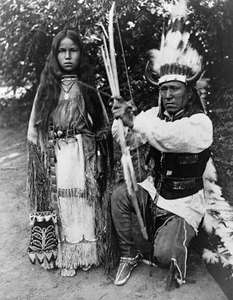 Kiowa Tribe of Oklahoma: Facts, History and Culture
Kiowa Tribe of Oklahoma: Facts, History and Culture
The Kiowa tribes are of a Native American descent that migrated from the Rocky Mountains area in Colorado in the 17th and 18th century to th
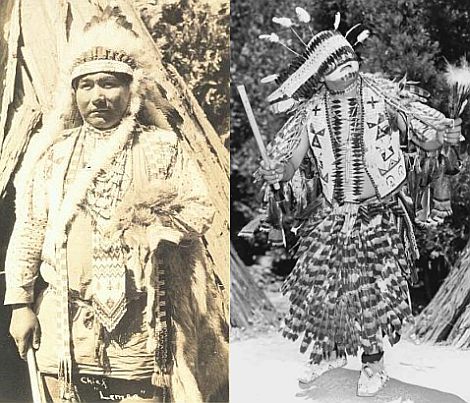 Miwok Tribe: History and Culture
Miwok Tribe: History and Culture
The Miwok ( meaning ‘people’ or ‘person') are aboriginal members of four Native American tribal groups associated philologically. They
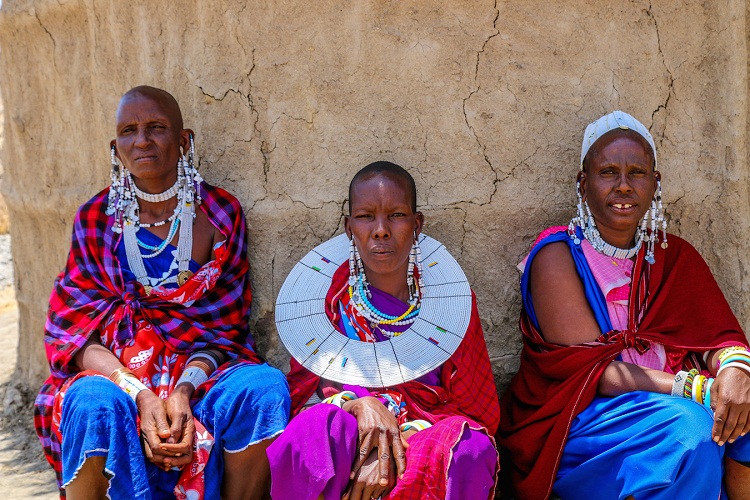 Maasai People (Masai): Tribal Facts, History and Culture
Maasai People (Masai): Tribal Facts, History and Culture
The Maasai tribe is a popular ethnic group inhabiting the African countries of Tanzania and Kenya. They have been a native of this region fo

